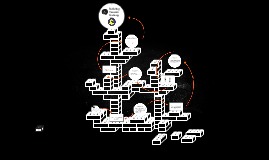House Building
Transcript: Ceramic tile, vinyl and wood flooring are installed as well as countertops. Exterior is completed to ensure proper drainage away from the home and prepare the yard for landscaping. Drywall is hung and taped so the seams between the boards aren’t visible, and drywall texturing (if applicable) is completed. The primer coat of paint is also applied after the taping is complete. Contractors will begin installing exterior finishes such as brick, stucco, stone and siding. The Steps of Building a House Finish mechanical trims; install bathroom fixtures Once the skeleton is finished, walls and roofing can be installed. At the same time, the electrical and plumbing contractors start running pipes and wires through interior walls, ceilings and floors. Sewer lines and vents, as well as water supply lines are installed. Bathtubs and one-piece shower or tub units are put in place at this point because there’s more room to move large, heavy objects. Duct work is installed for the heating, ventilation and air-conditioning (HVAC) and possibly a furnace. HVAC vent pipes are installed through the roof, and insulation is installed in the floors, walls and ceilings. After the roofing goes on the electrician installs receptacles for outlets, lights and switches and runs wires from the breaker panel to each receptacle. Wiring for telephones, cable TV and music systems are also included at this time. HVAC ducts and plumbing are usually installed before wiring, because it’s easier to run wires around pipes and ducts than the other way around. INSPECTIONS 2, 3 and 4:2-Framing, 3-plumbing and electrical and 4-mechanical systems. They are inspected to see if they are up to code and if they are properly installed. Steps to House Building Interior doors, baseboards, door casings, window sills, moldings, stair banisters and other decorative trim are installed, along with cabinets, vanities and fireplace mantels. Walls get a finish coat of paint and are wallpapered where applicable. Generally, exterior driveways, walkways and patios are formed at this stage. Many builders prefer to wait until the end of the project before pouring the driveway because heavy equipment can damage concrete. But some builders pour the driveway as soon as the foundation is completed. Complete Drywall, Interior Fixtures; Start Exterior Finishes Insulation is important in creating a more comfortable indoor climate while improving a home’s energy efficiency. One of the most important qualities of insulation is how well the material resists heat transfer or R-value. Most homes are insulated in all exterior walls, as well as the attic and any floors that are located above unfinished basements. The most common types of insulation used in new homes are fiberglass, cellulose and foam. Depending on the region and climate, they may also use mineral wool, concrete blocks, foam board or rigid foam, insulating concrete forms, sprayed foam, and structural insulated panels. Blanket insulation is typical in new-home construction. Another insulation option is liquid foam. It costs more than traditional insulation but liquid foam has twice the R-value per inch and can fill the smallest areas, creating an effective air barrier. Fiberglass and mineral-wool insulation are usually installed in side walls, attics, floors, small spaces, cathedral ceilings and basements. Manufacturers often attach a facing such as paper or foil paper to act as a vapor or air barrier. In areas where the insulation will be left exposed, such as basement walls, it sometimes will have a special flame-resistant facing. Install hard surface flooring and countertops; complete exterior grading Complete Rough Framing Install insulation Complete rough plumbing, electrical and HVAC* Finish Interior Trim; Install Exterior Driveways & Walkways Install mirrors, shower doors and finish flooring; finish landscaping by Cole Drumheller and Robert Harper 1. Prepare site and pour foundation. 2. Complete rough framing. 3. Complete rough plumbing, electrical and HVAC* ( heating, ventilation and air-conditioning) 4. Install insulation. 5. Complete drywall, interior fixtures; start exterior finishes. 6. Finish interior trim; install exterior driveways and walkways. 7. Install hard surface flooring and counter tops; complete exterior grading. 8. Finish mechanical trims; install bathroom fixtures. 9. Install mirrors, shower doors and finish flooring; finish landscaping. The construction crew levels the site and puts up wooden supports to serve as an outline for the foundation. The city inspector ensures that the foundation is up to code and was installed properly. Using a backhoe and a bulldozer, the crew clears the site of rocks, debris and trees. If the home has a full basement, it's dug out, and supports are formed and the area between them is leveled and fitted with utility runs. The foundation walls are then formed and poured. Once concrete is poured into the holes and trenches it will need time to dry. After the concrete

















